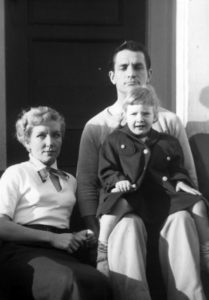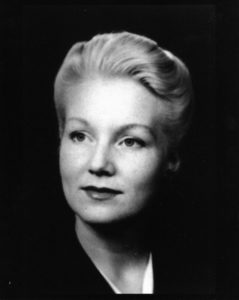Missing Beats | Women and the Beat Generation
This is part one of a two part feature. Read part one here.
I first met On the Road when I was twenty years old. It was unlike anything I had read before. The intensity, hedonism, friendships, freedom and rebellion resonated deeply. I loved how the sentences pulsed and flowed with an audacious energy. Kerouac’s prose was music. I was fresh out of 19th Century Lit classes and this book, by comparison felt very contemporary. I fell in love with it on first read, bouncing about on a Bus Éireann boneshaker from Waterford to Cork. Later I fell in love with the legend of the book: the autobiographical elements – I poured over biographies matching characters up with their real-life counterparts; the legendary scroll bashed out in a 3-week Benzedrine-fuelled stint of manic artistry; the stories of the lives and works it inspired. I related to Sal and Dean’s constant hunt for the heart of Saturday night – but there were no strong female characters to identify with.
When Kerouac’s female characters are not fulfilling their role as sex objects they are busy executing their domestic duties. Women are portrayed as content at being confined to the domestic realm.

Despite their defiance Marylou and Lee Ann still perform their domestic tasks dutifully. Lee Ann is described as a marvellous cook. At one point in the novel Dean authoritatively orders Marylou to rustle around the kitchen to see what there is. I can count only two incidents in the novel when the male characters carry out domestic tasks. Kerouac justifies this domestication of men by having them engage in the “male” pursuit of drinking (drinking in On the Road is inextricably linked to male bravado) at the same time, thereby asserting their masculinity. This betrayal of traditional gender roles is qualified by adjectives that imply it is a man-sized job that a mere woman would be incapable of undertaking. Another time Dean is saved from the emasculation of minding the baby and doing the dishes by drinking beer and doing an inadequate “sloppy” job of the cleaning.
It’s disappointing to find a Beat writer advocating oppression since the Beat movement was ostensibly opposed to all forms of repression but it’s important to realise that Kerouac penned his novel within the post-war context; his ideas and attitudes were firmly entrenched within a time and place. After the war America initiated a return to suburban domesticity as an ideology with a view to re-establishing the pre-war patriarchal status quo of gender relations. Many women were put under pressure to give up their jobs for the returning war veterans and return to their traditional domestic role. Adhering to strict gender roles meant that there was very little room for independence in the lives of women in post-war America; a girl was her father’s dutiful daughter until she married and became a devoted wife and mother. Beat writer Joyce Johnson was acutely aware of this harsh reality, writing in her wryly titled memoir Minor Characters, she remarks: “Nineteen-year-old girls did not leave home except for dormitories or marriage”. But Johnson, like many of the women associated with the Beat scene did leave home. Many had their own apartments, they worked (many were involved in publishing), they wrote, they had sex outside of marriage, they experimented with drugs – they defied the gender expectations of the era.
Unfortunately, On the Road’s characterisation of women captures none of this. It’s worth remembering that Kerouac was an individual writer, not bound by any creed or doctrine of rebellion. Of course, the Beat ethos and Kerouac’s On the Road did succeed in advocating individualism and non-conformity. They created an atmosphere that fostered young women artists. Despite their sometimes-sexist attitudes the fundamental principles of Beat philosophy inspired the women of the scene to asset their individuality.

It makes sense that many women writers of the scene chose to report their experience through the genre of memoir since drawing on life experience and autobiographical details was a literary technique employed by many of the male Beat writers. Ginsberg used autobiographical material in his famous poems Howl and Kaddish. William S. Burroughs’ account of his descent into heroin addiction in Junky is semi-autobiographical, Neal Cassady published his autobiography The First Third, and of course On the Road is based on Kerouac’s adventures with Neal Cassady.
Writing a memoir allowed a female writer of the scene an opportunity to re-tell her story from her subjective viewpoint, removed from the patriarchal constraints of the time. In writing their memoirs they were afforded their first opportunity to give their account of what it was like to be silenced, stereotyped and portrayed as insignificant in male-authored Beat texts.
Throughout her memoir Joyce Johnson is concerned with providing the reader with realistic versions of the female characters depicted in Kerouac’s novels. Johnson writes generously about other women associated with the Beat scene like Edie Parker and Joan Burroughs. In doing so she re-inscribes their names in Beat history as subjective, intelligent individuals rather than stereotyped characters. She describes Joan Burroughs as matching her husband wit for wit and how she startled the men by holding her own in their discussions. She celebrates her friendship with Elise Cowen as Kerouac celebrates his male friendships in On the Road. Interestingly, Johnson describes Kerouac as someone who took her writing seriously, and was a source of encouragement.
In her memoir Off the Road Carolyn Cassady writes about many of the events detailed in On the Road from her perspective. She illustrates a self-portrait very much at odds with the conventional housewife Camille Moriarty (her character in On the Road). She details her experiences of smoking weed and her extra-marital affair with Kerouac, her husband’s best friend. At one point, she remarks at how Kerouac “wasn’t writing anything intimate about our relationship, as he seemed to think he had”. Elsewhere she describes her relationship with Neil Cassady as a marriage of intellectual equals. Importantly, she never appears to conceive of herself as intellectually inferior to the male Beats. On the contrary, she makes repeated reference to the stimulating intellectual conversations she had with Kerouac, Ginsberg and Cassady. Both Johnson and Cassady are clearly aware of the discrepancy between how things were and how Kerouac depicted them. The fact that Kerouac’s female characters were based on three-dimensional complex women that he knew makes his reduction of them to one-dimensional stereotypes on the page hard to forgive.
Diane di Prima was the only women writer of the scene to be recognised by the male Beats. In her poem, The Quarrel she writes “I am sick I said to the woodpile of doing dishes”. She suffers her frustration in silence “because it’s so fucking uncool to talk about it”.
The labelling of Jack Kerouac’s On the Road as a counter-culture writing is problematic, not just because of Kerouac’s use of traditional American themes and his conformity to mainstream attitudes towards gender roles, but also because when it was published On the Road received extensive media attention. The overwhelming success of the Beat writers initiated by their widespread recognition in the media begs the question: what defines a work as marginal or mainstream? In his critique of consumerism, A Supermarket in California Ginsberg places Walt Whitman in a gaudy neon lit supermarket. Ginsberg knows that ultimately everything is absorbed by America’s commodity culture – everything is a product to be marketed and sold, including poetry. Assimilation into the mainstream appears to be the fate of all counter-cultures, including the Beat writers.
In Memoirs of a Beatnik Diane di Prima recalls that upon first reading Howl she realised that Ginsberg had broken ground just by getting published. Aware of the inherent dangers that come with recognition for marginal writers and poets, di Prima confesses that she experienced a sense of regret “for what we might be losing”. As previously mentioned Di Prima was the only female Beat writer to receive recognition alongside her male counterparts – but maybe because of their relatively unrecognised state, the fires of creativity burn more fiercely in the women’s writings since their flames are yet to be extinguished by the murky waters of the mainstream.
Whether they are categorized as marginal or mainstream, Jack Kerouac and the other male Beat writers are undoubtedly major contributors to the collective project of American Literature, but no canon of literature is complete without its female writers. In marking the 60th anniversary of the publication of On the Road it seems only fitting that we celebrate the women writers of the scene. By seeking out and reading the memoirs, poems, short stories and novels of – Hettie Jones, Elise Cowen, Joanne Kyger, Janine Pommy Vega, Joanne McClure, Brenda Frazer (Bonnie Bremser), Jan Kerouac, Joyce Johnson, Diane di Prima, ruth weiss, Lenore Kandel, Carolyn Cassady and other neglected writers – we can attain a deeper understanding of what it means to be Beat.
Featured Image Source

